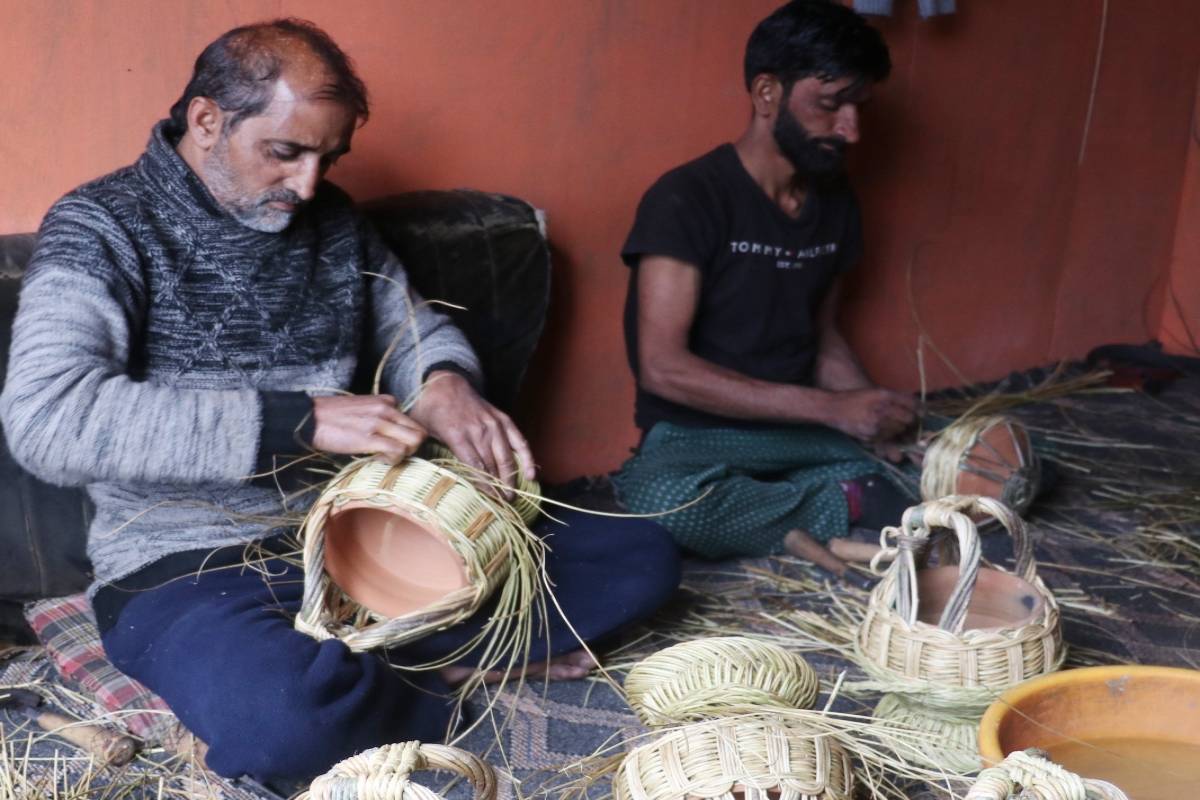With winters fast approaching Kashmiri men busy weaving Kangris, portable fire pots, is a common scene across the Valley these days. Within the next few days, Kangris can be seen piled up roadside.
Kangri is an earthen pot with wickers woven all over. When fueled with charcoal and dry Chinar leaves, it releases heat for about eight hours. People in Kashmir use it during the winter to keep themselves warm.
Advertisement
The Kangri has a significant place in the culture and heritage of Kashmir. It is part of Kashmiri tradition and even in this era of technology it is in demand. It is used even in public or private offices. There is archival evidence of the use of Kangri even earlier than 1526.
The earthen pot woven around with wicker filled with hot embers is kept by Kashmiris beneath their traditional clothing, pheran, to protect themselves from the chill. The Kangri normally kept inside the pheran or a blanket is also regarded as a work of art.
Charari Sharief town is famous for a peculiar kind of Kangri called ‘Charar Kangir’. South Kashmir’s Anantnag is another major producer of Kangri. Though the business of Kangri is not organized, it is covered under different government schemes.
The cheap and portable heat source is made of two parts, an earthen pot filled with embers, and its wicker encasement including two arms to handle the hot pot with care. The heat generated by the embers can reach to around 66˚ Celsius.
To harness as much heat as possible, the Kangri is traditionally carried under one’s pheran or blanket. It is a popular source of heating as it is inexpensive and portable.
Kangris come in different colours and ornamentation and are also used in festivals and rituals.
